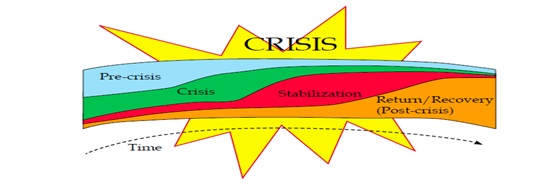- When considering how to respond to a humanitarian emergency, the focus is often on the initial outbreak. However, literature on emergencies usually considers a much broader time frame for humanitarian response, sometimes referring to the phases of an emergency as pre-crisis (before disaster strikes); crisis (when the disaster strikes and/or is at its zenith, often resulting in significant displacement); stabilization (when immediate emergency needs have been addressed); and return/recovery (when those who are displaced are returning home and/or the focus is on rebuilding systems and structures and transitioning to development). It is important to understand that all these stages overlap, such that work during each phase involves planning for subsequent phases. In settings with cyclical disasters/conflict, early response through to recovery may involve establishing structures and networks to respond to the next crisis. Any prevention framework should address all stages of humanitarian interventions, and attempt to prioritize prevention work accordingly.
 Visual from CARE, “Building Partnerships for Health in Conflict-affected Settings”, May 2007, pp 9-10.
Visual from CARE, “Building Partnerships for Health in Conflict-affected Settings”, May 2007, pp 9-10.
